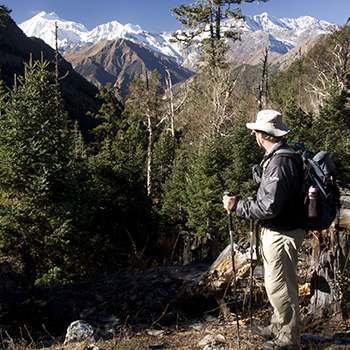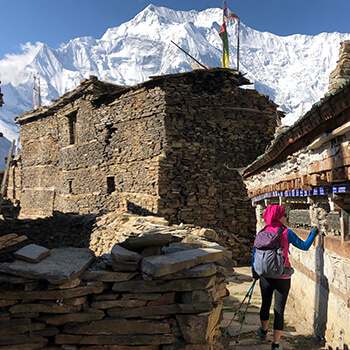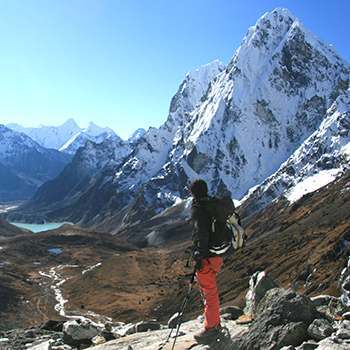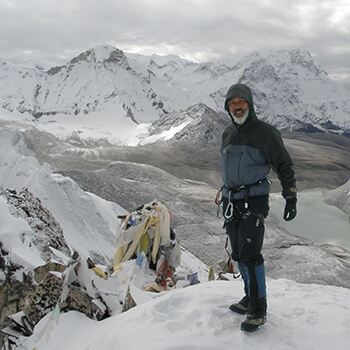Dolpo and Far West Treks
Wild, remote and rarely visited, throughout the entire Dolpo and Far West Treks region there is hardly a single trail that you might meet another trekker. These regions offer some amazing treks that you should try and see now! One day they will become as popular as the main trails and you will have lost an amazing opportunity for some unfettered and unique exploring.
5 Best Things About Dolpo and Far West Treks
- Trails beyond compare – these treks are wild and wonderful!
- Have the trails to yourself – go past the crowds and immerse yourself in real Nepal!
- Ancient Tibetan cultures, monasteries, yak herders – it’s all here!
- The Far West is the final frontier of trekking in Nepal!
- There are trails to suit every budget and amount of time!

Dolpo Region Route Options
Dolpo is remote, wild and considered by many to be one of the most magical and mysterious of places in the Himalaya. Linked for hundreds of years to Tibet, this region lies among the high peaks, on top of the roof of the world. Trekking here is very different from much of Nepal; oasis-like villages dot barren landscapes, scarred by deep canyons, and all beneath velvet blue skies.
Lying to the west of the Annpaurna and Mustang Treks regions, Dolpo and Far West Treks boast a diverse terrain and extraordinary biodiversity, Dolpo connects the Tibetan plateau with the pahar of Nepal, and has some of the highest continuously inhabited settlements on earth along the Thakchu Khola, at 4100m. To the south is a large east–west valley system called Lower Dolpo, and to the west is Mugu, which lies beyond the sacred Crystal Mountain and the Kanjiroba massif. To complete Dolpo’s isolation, the Khyaklum and Dhaulagiri Himals create a natural border to Mustang and Annapurna to the east. A combination of ancient animist beliefs, Tibetan Buddhism, and Bon religions predominate throughout the region.
The traditional route to Dolpo was from the south, through the Dhorpatan Hunting Reserve, along a trail that has been used as a salt-trade route for hundreds of years. However, most trekkers enter and exit Dolpo via the dirt airstrip at Juphal in Lower Dolpo. There are several trekking options that run through Dolpo, they are all magnificent and provide some wonderful GHT options. Experienced trekkers could consider some committing routes from Mustang (east) or Mugu (north-west), where trail finding and acclimatisation pose considerable challenges.
Perhaps the most beautiful place in Nepal is Phoksumdo Tal, in the centre of Dolpo, which can be combined with trails to Shey (Crystal Mountain) to access Bhijer, Saldang and the northern villages, or Dho Tarap and the valleys to the south-east. There are also route options that follow the Bharbun Khola, through Chharka Bhot and even to Hidden Valley to the north of Dhaulagiri.
Dolpo Region Permits
Most of Dolpo and eastern Mugu are protected by the Shey Phoksumdo National Park and Buffer Zone which covers a massive 3555 km2 and is the largest such park in Nepal. Referred to as a Trans-Himalayan Ecosystem (the lower, lush valleys of the mid-hills are linked with the arid Tibetan plateau), this is a culturally and environmentally sensitive and fragile region, which demands the utmost respect and care.
As at August 2019, the trekking permit fees for the Dolpa District are:
- Lower Dolpa, US$10 per person per week.
- Upper Dolpa, US$500 per person for the first 10 days and US$50 per person per day thereafter.
Plus you require the Shey Phoksumdo National Park entry fee of NRs 3000 per person (foreigners), NRs 1500 (SAARC nationals) and NRs 100 (Nepali nationals).
Dolpo and Far West Treks - Danphe Lekh above the gateway town of Jumla

Far West Treks
The Far West districts of Nepal have remained isolated and untouched while the rest of the country has been developing. Poor infrastructure, scarce resources, and marginalised ethnic groups are among many issues that have held the region back in years past. However, since 2008 a massive effort has been underway to develop and promote this region, which is considered by many to be a future adventure-tourism ‘hotspot’. If you are looking for an authentic trekking experience in pristine mountain scenery interlaced with legend and folklore, look no further, this region is for you!
Covering about 25% of Nepal’s Great Himalaya Range, the Far West is massive compared to the other trekking regions, but despite its size there are few recognised trekking routes. Dividing the region in two is the Karnali Nadi, one of the great Himalayan rivers. To the east, are Kanjiroba Himal and the mountains of Dolpo, to the west are the Api and Saipal Himals and the border with India. The second largest district in Nepal, Humla, fills the entire northern boundary with Tibet, and the southern districts of Darchula, Bajura and Bajhang lead to the pahar. Villages are largely subsistence based, so don’t rely on purchasing many foodstuffs; accommodation is frequently limited to finding a flat bit of pasture. The entire experience is similar to that of the first trekkers to Nepal in the 1950s, when the country first opened up. And that is part of the wonder and joy of visiting the region; the logistical effort in reaching these districts is far outweighed by the welcome you will receive and the feeling of wonder that every day brings.
Trekking is in its infancy throughout all these districts, trails can be rough and take an unrelenting approach to ascent and descent. There are two routes through Mugu from Pho in Dolpo and they are both very tough and wild trails. Rara Lake National Park, near Jumla, receives some trekkers, as does the Yari valley (near Simikot, popular with groups trekking to Mt Kailash) and Khaptad National Park. Mountaineering groups have explored both Api and Saipal Peaks, but trekkers here are extremely rare. No doubt, things will change.
Far West Trek Permits
The two smallest National Parks in Nepal, Rara and Khaptad, and the newly formed Api-Nampa Conservation Area are the only protected mountain areas in the Far West (other than Bardia National Parks, Sukla Phanta Wildlife Reserve and the Blackbuck Conservation Area on the terai). However, controlled area trekking permits are required to visit all districts. Maps are hard to find, especially for the areas around the Api and Saipal Himals. This region will benefit enormously from tourism in the years to come; as one of the first to trek here, it is important that you lead by example. Please follow the Great Himalaya Trail Code in every respect and help make a positive difference to a region that desperately needs all the help it can get.
Trekking permits are a little complicated in the Far West of Nepal, as at August 2019, the trekking permit fees are:
- Humla District, for the first 7 days per person US$50 and US$7 per day per person thereafter.
- Mugu District, for the first 7 days US$90 per person and US$15 per day per person thereafter.
- Bajhang and Darchula Districts: for the first 7 days US$90 per person and US$15 per day per person thereafter.
Plus National Park entry fees:
- Rara National Park, NRs 3000 per person (foreigners), NRs 1500 (SAARC nationals) and NRs 100 (Nepali nationals).
- Khaptad National Park, NRs 1500 per person (foreigners), NRs 500 (SAARC nationals) and NRs 100 (Nepali nationals).
- Api Nampa Conservation Area, NRs 2000 per person (foreigners), NRs 500 (SAARC nationals) and NRs 100 (Nepali nationals).
View from Margor Lekh Looking North














